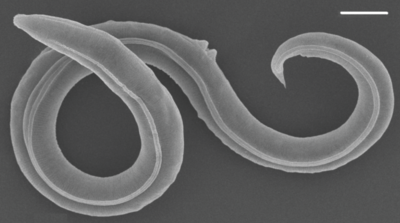ARTICLE AD BOX

Imagine bringing life back after 46,000 years, like some form of suspended animation. Deep within Siberian permafrost, at a depth of about 131 feet, scientists have discovered a unique, tiny roundworm frozen since the Late Pleistocene period, when woolly mammoths and saber-toothed tigers roamed Earth.
This little creature has now been revived, and it not only seems to have just woken up from its deep sleep, but is surviving like any other creature adapted to live in harsh, cool environments and is reproducing in a modern laboratory.This discovery opens a window into ancient times and the unbelievable resilience of life.
A miracle frozen deep under the permafrost for centuries!
In 2018, Russian scientists from the Institute of Physicochemical and Biological Problems in Soil Science dug deep into Siberia’s permafrost and discovered two nematode species preserved in an ancient burrow.
Among them, they found a roundworm in a cryptobiotic state, essentially “between death and life,” with low and almost undetectable metabolic activity. Anastasia Shatilovich, a Russian scientist known for her work in reviving roundworms, rehydrated the worms with water, then carried about 100 of them in her pocket to labs in Germany for further study.Radiocarbon analysis of associated plant matter dated the permafrost to between 45,839 and 47,769 years ago, dating the frozen soil firmly in the Late Pleistocene.
This means that these worms are among the oldest organisms ever successfully revived, which are measured in decades rather than millennia.

A new species emerges
Once revived, the researchers sequenced the worm’s genome and found it did not match any known species. Instead, they named it Panagrolaimus kolymaensis, an honour to the Kolyma River region. Detailed analysis confirmed this roundworm had remained in cryptobiosis for approximately 46,000 years, according to the study published in the National Library of Medicine.
This species has a surprising trait that helps it survive in the harshest climate!
Interestingly, this new worm species shares traits with an already known species, Caenorhabditis elegans. Both species produce trehalose, a sugar believed to protect cellular structures during freezing and dehydration. Researchers found that preconditioning the worms with mild dehydration before freezing significantly boosted their survival at −80 °C.The research team believes this discovery may boost conservation biology. Schiffer, University of Cologne, Köln, Germany, told CNN: “By looking at and analyzing these animals, we can maybe inform conservation biology, or maybe even develop efforts to protect other species, or at least learn what to do to protect them in these extreme conditions that we have now”.



.png)
.png)
.png)
















 1 day ago
4
1 day ago
4









 English (US) ·
English (US) ·